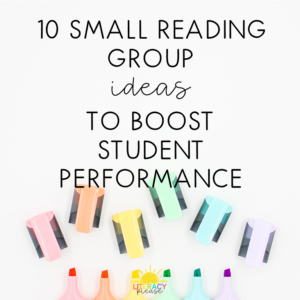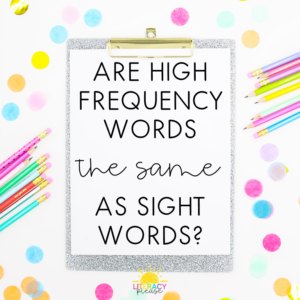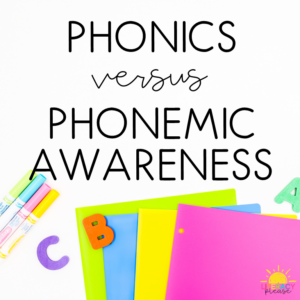The 6 traits of writing has been a staple in writing instruction for years. To some, the 6 traits seem like something meant for older students. The truth is, it’s perfect for all ages.
So what are the 6 traits of writing? What does each trait develop? What’s the purpose of teaching them?
Let’s begin with the latter. . . What’s the purpose of teaching the 6 traits of writing? The traits create a common language for teachers and students when teaching and learning about the components of quality writing.
The 6 traits of writing–ideas, organization, word choice, voice, sentence fluency, conventions, and presentation–are taught explicitly in order for students to understand the vocabulary. Each trait develops a writing skill that students can use in any genre.
Trait 1: Ideas

The first trait is ideas. This trait includes a writer’s ability to come up with ideas for writing. While this might seem like a basic skill or trait, anyone who has taught writing knows there are students that “don’t know what to write about.”
Students that have trouble with this trait would benefit from instruction in finding ways to come up with ideas. Many times having conversations with your students can help spark some ideas.
If you’re looking for more ideas on this trait, check out this article.
Trait 2: Organization

This trait focuses on a writer’s ability to keep their writing organized. Whether it be the writing is told in sequential order or information is categorized properly. Organization helps the reader understand the writer’s message.
Writers in need of help with organization would benefit from sentence frames using transition words such as first, next, then, and last. For informational writing, having students think of broad topics as headings and including information about the topic would also help with this trait.
This article shares ideas for helping students with organization.
Trait 3: Word Choice

Finding the right words isn’t always easy for young students. Heck! Finding the right words isn’t always easy for me. But I’m sure you’re familiar with the language young writers use. They really seem to like the words: like, love, play, went. . . you know what I mean. Teaching kids there’s synonyms for the words they use repeatedly help to make their writing better. While this concept becomes a bit more sophisticated as writers get older, just having a list of synonyms for like can make your writers’ writing a work of art.
Can you imagine I like sentences becoming I love, I prefer, I fancy, I adore, I enjoy? Find those words that your students use a little too often and chart some alternative words to help students develop their word choice.
Trait 4: Voice

Even as adults, finding our voice can be a challenge. Showing our passion for a topic and letting our personality shine through our writing are ways we use voice. Conveying feelings and invoking those same emotions in readers are all part of voice. It can be tricky, but a young writer’s voice can be found in those heaps of hard-to-read words. And that might just be the key. Allowing writers to just write without worrying about the mistakes that come with writing.
Give students the opportunity to tell stories in class. Ask them questions and find what excites them. Then tell them: I can see you think this is an exciting topic, you should write about it!
Trait 5: Sentence Fluency

Similar to word choice, writing can sound redundant when our sentences have similarities. Sentence fluency includes beginning sentences with new words and varying in length. Long sentences, short sentences, medium sentences. Sentences that flow like someone is speaking. This is sentence fluency and what makes writing enjoyable to read.
Trait 6: Conventions

This seems to be the trait teachers’ eyes immediately notice. Why? It’s easy to notice spelling mistakes, the lack of spacing, capital letters, and punctuation. But as you can see, conventions is only a piece of writing. And this is why we need to take a step away from the judgey convention eyes and accept that there will be mistake and there’s a time and place to address this. In the meantime, let’s look for the traits our students are doing well.
If this is something you’d like to focus on with some of your students, this article gives you some tips for how to help students with spelling.
Trait 7: Presentation

Presentation (yes, there’s a seventh trait) includes the handwriting, illustrations, the cover, and anything that draws the eyes toward a student’s work. No matter how good a piece of writing is, most of us tend to be drawn to the presentation of a book or pieces of writing. Show your students various books, magazines, or anything with text. Discuss what draws them to certain pieces of writing. Is it the cover, the colors, the illustrations? Then discuss how they can make their writing presentable for others.
The 6 traits of writing is the vocabulary used to describe writing. It’s a common set of words we use with our students across genres and grade levels to discuss quality writing. The vocabulary of the 6 traits will be used for years to come and will help students strengthen their writing and discuss text. So, how could you use this language in your classroom?





